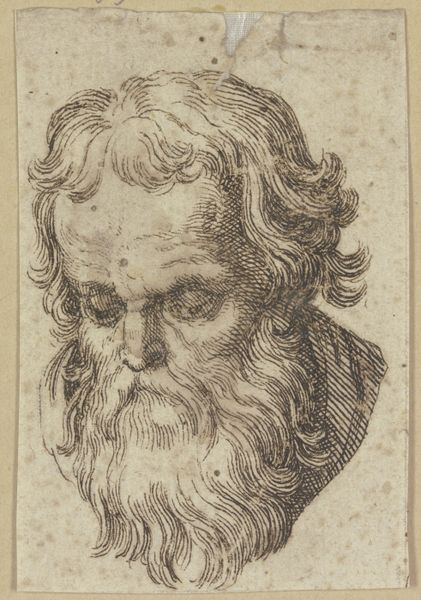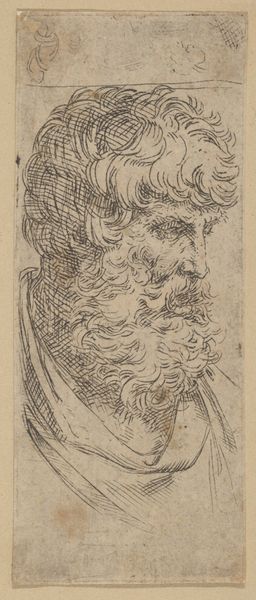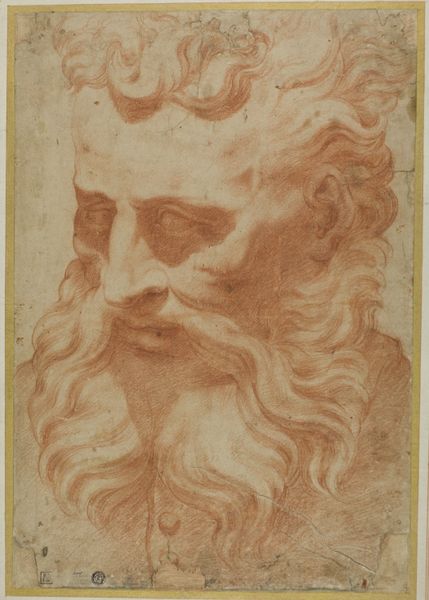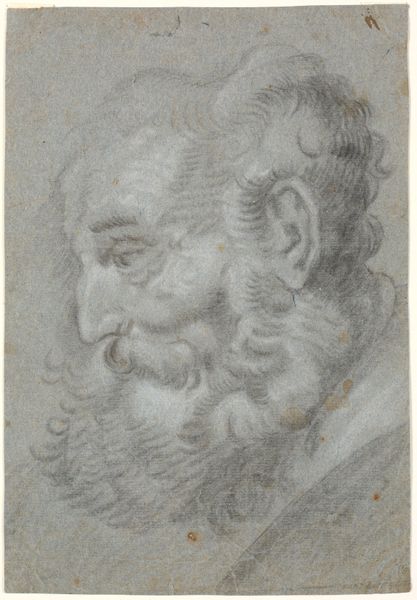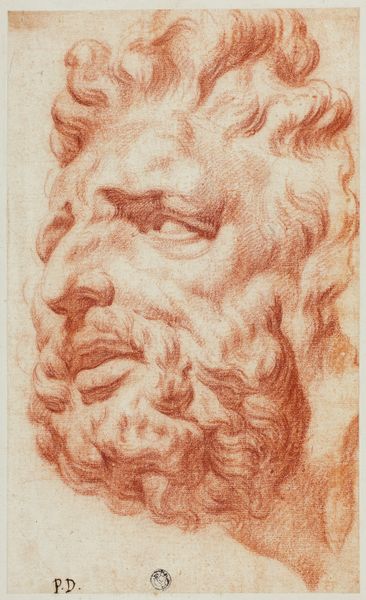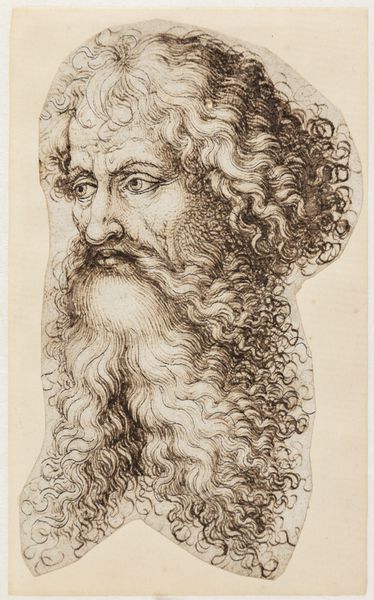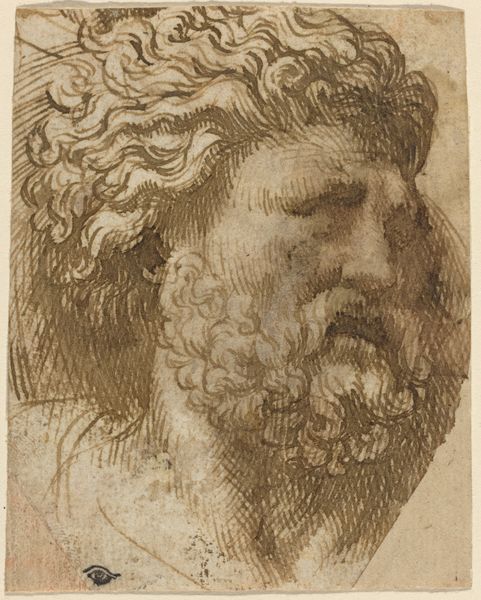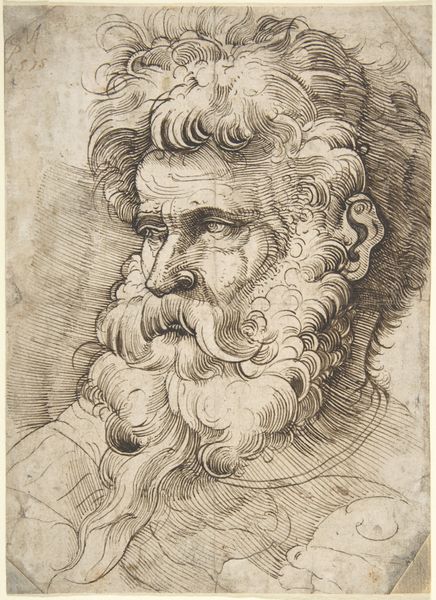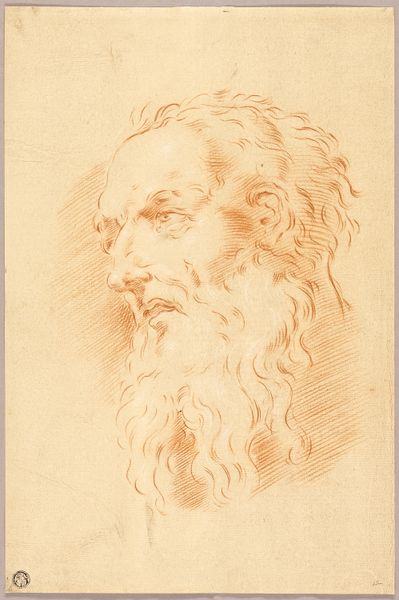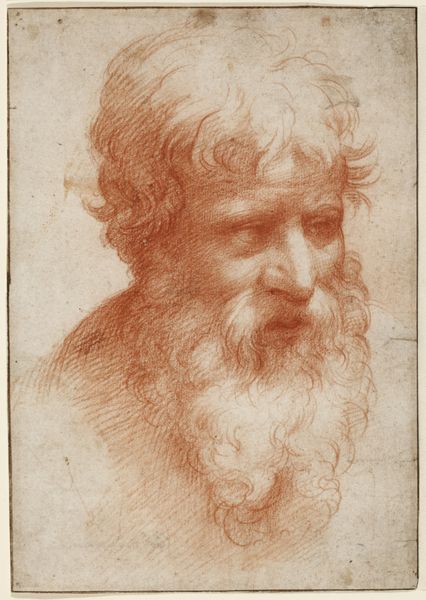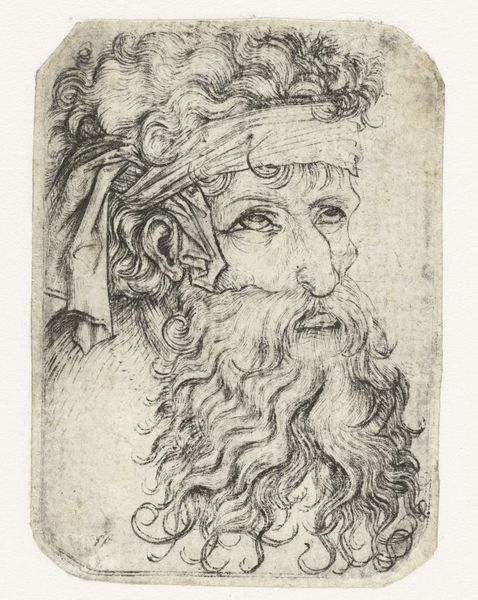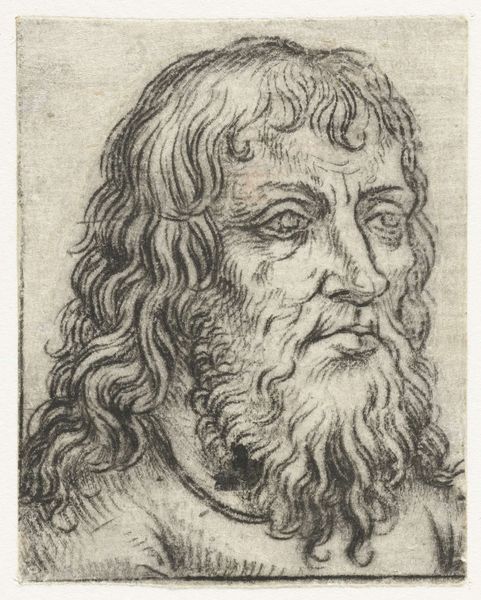
Männlicher Kopf mit langem geteiltem Bart dreiviertel nach rechts
0:00
0:00
drawing, paper
#
portrait
#
drawing
#
high-renaissance
#
figuration
#
paper
#
pencil drawing
#
line
Copyright: Public Domain
Editor: Here we have a drawing titled "M\u00e4nnlicher Kopf mit langem geteiltem Bart dreiviertel nach rechts," a male head with a long beard, by Baccio Bandinelli. It's a pencil drawing on paper, seemingly from the High Renaissance. I'm immediately struck by the intensity of the gaze. What do you see in this piece? Curator: Beyond the technical skill, which is undeniable, I see a deliberate construction of masculinity, deeply intertwined with the political and social structures of Renaissance Florence. Consider the beard – a symbol of wisdom and authority – carefully cultivated and rendered with such detail. How might this image be performing a certain ideal of manhood within its specific cultural context? Editor: I hadn't considered that. So, is it presenting an ideal rather than just depicting an individual? Curator: Exactly. Think about who Bandinelli was – a court artist, deeply embedded in the Medici power structure. This drawing, even if a study, reflects the values that sustained that power. Who gets to be portrayed, and how, speaks volumes about social hierarchies. Could this image, in its way, be reinforcing those hierarchies? Editor: It's interesting to think of a simple drawing carrying so much weight, but it makes sense given the period. Curator: Consider also the High Renaissance emphasis on reason and order. Does the drawing participate in those same ideologies? In what way does the style and form bolster this need to promote those ideals, or does it offer alternative views on personhood and representation? Editor: I’m seeing the portrait differently now. Thanks to your comments, I have some important ideas to think through regarding gender and its visual representation within society! Curator: Excellent. And remember, art is always in dialogue with its own time, both reflecting and shaping the culture that produced it.
Comments
No comments
Be the first to comment and join the conversation on the ultimate creative platform.
